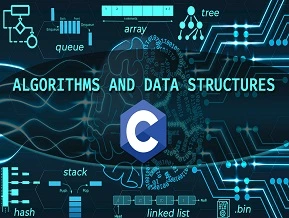The Introduction to Algorithms and Data Structures course lays a strong foundation in understanding the principles of algorithm design and data organization.
Database Structure and Algorithm
The Introduction to Algorithms and Data Structures course lays a strong foundation in understanding the principles of algorithm design and data organization. Algorithms and data structures are the building blocks of computer science, enabling efficient problem-solving and optimized performance in software development. This course provides an in-depth exploration of key concepts such as database structure and algorithm analysis, algorithmic complexity, and practical implementation strategies.
From basic to advanced topics, this course is designed to help learners master the fundamentals of algorithms and data structures, ensuring they are well-prepared for technical challenges in various fields, including software engineering, data science, and artificial intelligence. By engaging with real-world examples, coding exercises, and theoretical discussions, participants will develop a robust understanding of how algorithms and data structures drive computational efficiency and innovation.
This course is ideal for: Aspiring software developers seeking to strengthen their algorithmic thinking and programming skills. Computer science students aiming to excel in academic and technical interviews. Data enthusiasts and professionals looking to optimize their problem-solving techniques. Anyone with a basic understanding of programming who wants to build a strong foundation in algorithms and data structures. No prior knowledge of advanced algorithms is required, but familiarity with a programming language like Python, Java, or C++ is recommended.
Understand the fundamental concepts of algorithms and data structures.
Analyze algorithmic efficiency using Big-O notation.
Implement basic and advanced data structures, such as arrays, linked lists, stacks, queues, trees, and graphs.
Apply key algorithms for searching, sorting, and optimization.
Design solutions using divide-and-conquer, greedy algorithms, and dynamic programming approaches.
Solve real-world computational problems effectively.
Develop a strong problem-solving mindset through hands-on coding exercises.
-
- Overview of algorithms and their significance in problem-solving.
- Understanding data structures and their role in efficient computation.
-
- Introduction to time and space complexity.
- Analyzing algorithm efficiency and scalability.
-
- Arrays, linked lists, stacks, and queues.
- Applications and implementation of fundamental data structures.
-
- Linear and binary search.
- Common sorting techniques: bubble sort, merge sort, quicksort, and more.
-
- Trees (binary trees, binary search trees, AVL trees) and graphs.
- Hash tables and their applications.
-
- Principles of divide-and-conquer.
- Solving problems such as merge sort and quicksort using this technique.
-
- Greedy algorithms for optimization problems.
- Dynamic programming for solving complex problems like knapsack and shortest path.
-
- Strategies for algorithmic problem-solving.
- Case studies and real-world examples to solidify understanding.
Earn a Professional Certificate
Earn a certificate of completion issued by Learn Artificial Intelligence (LAI), accredited by the CPD Standards Office and recognised for supporting personal and professional development.

Key Aspects of Course

CPD Accredited
Earn CPD points to enhance your profile

Free Course
This course is free to study

Self-Paced
No time limits or deadlines

Flexible & 24/7 Access
Learn anytime, anywhere

Build In-Demand Skills
Get job ready

Updated AI Skills
Stay current with AI advancement

Global Learning
Accessible Worldwide

Premium Materials
High-quality resources

Employer Approved
Boost your career prospects



